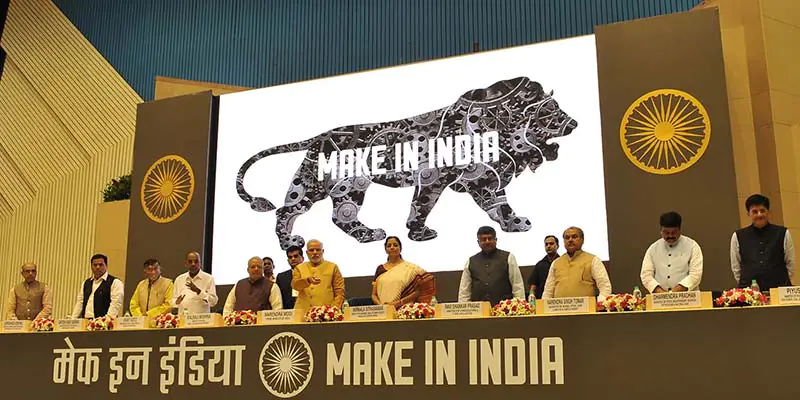
The Indian textile industry,¬Ýknown for its diversity and immense demand in the global market, recently got some good news. The recently released ‘Make in India ‚Äì Textile and Apparel Sector Achievement’ report shows how the government‚Äôs special package of Rs. 6,000 crores for the textile industry and¬Ýthe increased inflow of FDI equity have boosted the share of textiles and apparel in total exports to 15% in 2015-16.
Make in India policy and the textile industry
One of India’s most ambitious projects, the ‘Make in India’ campaign, aims at turning the country into a manufacturing hub by boosting the FDI inflow along with the creation of an increased number of jobs in the country. This campaign also makes it a point that the logistics and systems to address the queries of potential investors are addressed promptly.
When it comes to manufacturing capacity, the Indian textile and garment industry holds the second place at the global level. India is not only the largest producer of cotton and jute in the world, but it also holds the distinction of being the second-largest fiber producer. India is also home to 8% of the world’s rotors and 24% of world’s spindles. Along with these achievements, the country has a comparative advantage regarding the cost of production and availability of a skilled workforce. These facts show that the Indian textile industry has huge potential Рall that is needed is focused and favorable policies that will place the textile and garment industry at an advantageous position.
Through the ‘Make in India’ scheme, the Indian government has approved 100% FDI under the automatic route. This policy helped the Indian textile industry bring huge investments in the past five years, attracting FDI worth USD 1.85 billion as of March 2016. Major investments in the form of joint ventures (JV) and the signing of a memorandum of understanding (MoU) have also taken place. Some of the recent ones include MoU and JV between the Trident Group and French firm Lagardere Active Group and Reliance Industries Ltd (RIL) and China-based Shandong Ruyi Science & Technology Group Co.
Programs like Amended Technology Upgradation Fund Scheme (ATUFS), North East Region Textile Promotion Scheme (NERTPS), and Geotechnical Textiles in North East Region (NER) have also played a major role in improving the overall performance of the textile industry. The ‘Make in India’ campaign is also about providing opportunities for entrepreneurship to the country’s youth. And with programs like Focus Incubation Centers (FIC) on Technical Textiles, budding entrepreneurs are encouraged to develop innovative technical textile products. Likewise, efforts are also made to promote the handloom sector by injecting more investments and bringing technical expertise into the sector.
Overall it is the readymade garments, wool and woolen textiles, silk, carpets, handicrafts, and coir and coir products which have witnessed growth in their export value. In fact, if industry experts are to be believed then the volume of Indian textile and apparel exports will¬Ýreach the value of around $62 billion by 2021, from the present $38 billion. At present America and Europe are the key markets for Indian textiles and garments, while South America, Russia, and Iran have emerged as new markets for the industry.
Thousands of India’s leading textile companies can be in your contact list if you register to join 91÷∆∆¨≥ß today! Whether you are looking reliable suppliers, top textile manufacturers, wholesalers and potential customers in over 90 major countries, or finding out what your competitors are buying and which suppliers they’re using, 91÷∆∆¨≥ß can help you reach out to sales prospects and decision-makers in the textile industry across the globe.
Register for free now to build your own network of global textile companies on 91÷∆∆¨≥ß



